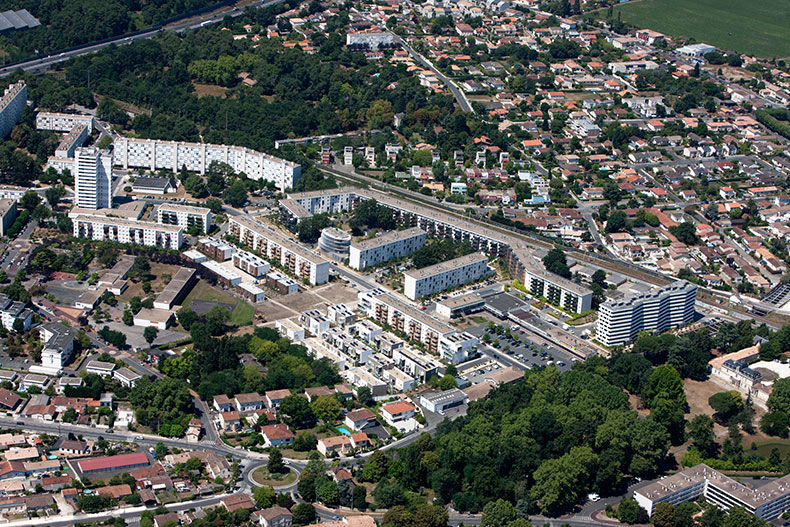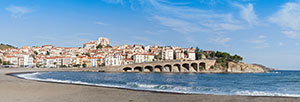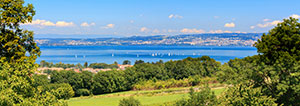How city councils are aligning their budgets with the SDGs

Multi-year investment plans in line with the ecological transition? This is a reality for a number of French municipalities, more and more of which are taking this approach. Pessac, Gironde’s third-largest city, is one of the most advanced in this field. The 2020-2026 term of office is clearly flying the green flag, under the impetus of its mayor. ” The goal is to invest 100 million euros over six years, taking into account the environmental impact of each action,” explains Aurélie Lerebourg, director of the city council’s Accelerating Transitions mission.
In concrete terms, each project is sifted through the SDGs, the sustainable development goals that make up the UN’s Agenda 2030, to which France has been a signatory since they were proclaimed in 2015(see our article here). A handy matrix for analyzing every aspect! A case in point is the city’s future swimming pool: “At first glance, in terms of water consumption, energy consumption and footprint, this project may seem difficult to reconcile with the SDGs,” admits Aurélie Lerebourg. Nevertheless, it also fulfils obvious educational objectives, and the future building will replace an aging structure that is a real heat sieve. The new building will be equipped with photovoltaic panels and planted areas, and the number of basins has been reduced to limit impact.”
Helping local authorities take ownership of the SDGs
Faced with the complexity and lack of legibility that the SDGs can sometimes take on, and also criticized for their incantatory nature, AFNOR provides a methodology that translates them into a usable matrix. It’s essential if local authorities are to take full ownership of the issues at stake, both in terms of general services and elected representatives! To achieve this, a score is assigned to each project, analyzing its impact on each of the objectives.

The Pessac pool scored 13.4 out of 20. In the Pyrénées-Orientales region, the town of Banyuls has not yet reached this stage, but the process begun two years ago has shown the teams that they were already carrying out actions in line with the SDGs, without necessarily being aware of it, such as the CCAS or driving license subsidies for young people. The first step was to take stock of all our actions and associate them with the SDGs,” explains Jérôme Chiodo, the town’s General Manager. We then drew up a six-point plan, a roadmap for our city directly inspired by the challenges of sustainable development. Each of the major projects of the current term of office is part of this plan. For example, the overhaul of reception points, the re-naturalization of a river or support for the blue economy. “AFNOR played a key role in raising awareness among elected representatives and municipal staff of the impact of our actions,” says the DGS.

As the institutional expert on the Agenda 2030, AFNOR has the expertise and perspective to help local authorities take ownership of sustainable development objectives,” points out Laurent Rey, Manager of Transitions for Local Authorities and Territories at AFNOR. We also offer them a concentrate of best practices, based in part on voluntary standards. This will speed up the process. Starting with the PPI, some town councils intend to adopt the same approach with their operating budgets, in a quest for continuous improvement”. Such is the case in Évian, Haute-Savoie. The city is committed to the three main areas of its budget: the PPI, the wage bill and the operating budget. Even if we’re just initiating the process, we feel it’s essential that all the money we spend is in line with the SDGs,” insists Xavier Parisot, the town’s director general of services. At the school, for example, we’re making management aware of purchasing choices: is the laminating machine essential? How can we opt only for recycled paper? It’s all about identifying your needs, then choosing the best product, even if it means making a budgetary effort: of course, refillable felt-tips are more expensive to buy, but they’re financially more attractive in the long term and generate less pollution.
A new way of thinking
The same method applies to the HR budget: promoting quality of life at work and focusing on training builds team loyalty and reduces absenteeism. “ It’s a complex process, but AFNOR provides a frame of reference and the strength of a network, with time for exchanges between peers to share best practices, difficulties and solutions “, says the DGS. In addition to meetings and exchanges between communes, AFNOR is also making available a white paper on the approach, which can be downloaded free of charge here.
Another virtue of this approach is that it breaks down the silos that often prevail in local authorities. As each department is required to carry out self-assessments, all are encouraged to incorporate new aspects into their thinking. In Pessac, for example, we’re very proud of our municipal home delivery service for the elderly,” says Aurélie Lerebourg. It is fully in line with United Nations goals 1, 2, 3, 10, 11 and 12. But the ODD matrix shows that if deliveries are made with old diesel vans, the environmental pillar is impacted. Hence the plan to switch to an electric fleet, or even to delivery by cargo bike. ” A 360-degree approach, so that no dimension is overlooked!
Les 17 objectifs de développement durable
- Éradication de la pauvreté
- Lutte contre la faim
- Accès à la santé
- Accès à une éducation de qualité
- Égalité entre les sexes
- Accès à l’eau salubre et à l’assainissement
- Recours aux énergies renouvelables
- Accès à des emplois décents
- Bâtir une infrastructure résiliente, promouvoir une industrialisation durable qui profite à tous et encourager l’innovation
- Réduction des inégalités
- Villes et communautés durables
- Consommation et production responsables
- Lutte contre le changement climatique
- Vie aquatique
- Vie terrestre
- Justice et paix
- Partenariats pour la réalisation des objectifs